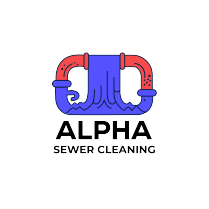24/7 EMERGENCY SERVICES
317 Loring Road Levittown NY 11756
Outdoor drain
Outdoor drains are vital for directing water away from buildings, driveways, gardens, and other outdoor spaces. These drains help prevent flooding, soil erosion, and structural damage, especially during heavy rain or storms. Over time, outdoor drains can become clogged with leaves, dirt, debris, and tree roots, leading to blockages that require cleaning and maintenance. This guide explores the causes, cleaning methods, preventive measures, and maintenance tips for keeping outdoor drains in optimal condition.
Common Causes of Outdoor Drain Clogs
- Leaves and Twigs: Falling leaves and plant debris can accumulate in outdoor drains, especially during autumn.
- Mud and Dirt: Rainwater carries soil and sediments into the drain, creating blockages over time.
- Tree Roots: Roots from nearby trees may grow into drainpipes, causing severe blockages and damage.
- Trash and Litter: Items like plastic wrappers, bottles, and other litter can obstruct water flow.
- Grease and Oils: Spills from outdoor cooking or vehicle maintenance can solidify and block drains.
- Sand and Gravel: These materials can wash into the drain from driveways, patios, or construction sites.
Signs of a Clogged Outdoor Drain
- Standing Water: Water pools around the drain instead of flowing away.
- Slow Drainage: Rainwater takes an unusually long time to clear from the area.
- Foul Odors: Decaying organic matter trapped in the drain emits unpleasant smells.
- Overflowing Water: Water spills over the drain during rainfall.
- Backflow: Water flows back out of the drain after entering it.
DIY Methods for Cleaning Outdoor Drains
1. Remove Surface Debris
- Clear away leaves, dirt, and visible debris from around the drain using gloves, a broom, or a rake.
- Dispose of debris in a compost bin or trash bag.
2. Use a Drain Rod
Drain rods are flexible tools designed to break up and remove blockages:
- Insert the rod into the drainpipe and twist it clockwise.
- Push and pull the rod to dislodge the clog.
- Repeat until water flows freely.
3. Flush with Water
A garden hose can help clear minor blockages:
- Insert the hose into the drainpipe.
- Turn on the water at high pressure to flush out debris.
- Check for improved water flow.
4. Baking Soda and Vinegar
For small clogs, this natural solution can be effective:
- Pour a cup of baking soda into the drain.
- Add a cup of vinegar and allow it to fizz for 15–20 minutes.
- Flush the drain with hot water to clear loosened debris.
5. Wet/Dry Vacuum
A wet/dry vacuum can remove clogs by suction:
- Set the vacuum to liquid mode.
- Seal the hose around the drain opening.
- Turn on the vacuum to extract debris and blockages.
6. Use a Pressure Washer
For stubborn clogs, a pressure washer with a jet nozzle attachment can clear the pipe effectively.
Professional Outdoor Drain Cleaning
When DIY methods are insufficient, professional services can resolve severe or recurring issues:
1. Hydro Jetting
High-pressure water jets remove blockages, grease, and debris while cleaning the interior of the pipes.
2. Rooter Machines
Specialized tools cut through and remove invasive tree roots from drainpipes.
3. Video Camera Inspection
A small camera is inserted into the drain to locate and identify the cause of the blockage.
4. Excavation and Repair
If the drainpipe is severely damaged, professionals may need to excavate and replace it.
Preventive Measures for Outdoor Drains
- Install Drain Covers: Use grates or mesh covers to catch leaves, twigs, and litter before they enter the drain.
- Regular Cleaning: Clear debris from around the drain weekly, especially during fall and after storms.
- Trim Nearby Trees: Keep tree branches pruned to minimize leaf and debris fall into the drain.
- Redirect Runoff: Ensure gutters and downspouts direct water away from the drain to prevent overloading.
- Use Root Barriers: Install barriers around drainpipes to prevent tree roots from invading.
- Flush Periodically: Run water through the drain monthly to prevent buildup of dirt and sediments.
How to Maintain Outdoor Drains in Specific Areas
1. Driveways and Patios
- Issues: Sand, gravel, and vehicle grease.
- Solution: Sweep driveways regularly and use grease traps if needed.
2. Gardens
- Issues: Leaves, soil, and roots.
- Solution: Use a mesh drain cover and avoid planting trees near the drain.
3. Basements and Cellars
- Issues: Mud and rainwater overflow.
- Solution: Install a sump pump for additional drainage support.
Benefits of Regular Outdoor Drain Maintenance
- Prevents Flooding: Keeps water flowing freely, protecting your property from water damage.
- Eliminates Odors: Removes decaying debris and bacteria that cause foul smells.
- Extends Drain Lifespan: Reduces wear and tear by preventing clogs and overflows.
- Enhances Aesthetics: Keeps outdoor spaces clean and presentable.
- Saves Costs: Avoids expensive repairs and professional cleaning by addressing minor issues early.
When to Call a Professional
- Persistent clogs that DIY methods cannot resolve.
- Visible damage to the drain or surrounding area.
- Multiple outdoor drains are clogged simultaneously.
- Water backflow or flooding in critical areas.
- Need for a thorough inspection or advanced cleaning tools.
Conclusion
Outdoor drains are essential for effective water management and protecting your property from water-related issues. Regular cleaning, preventive measures, and timely maintenance can keep them functioning efficiently. While minor clogs can often be addressed with DIY methods, professional assistance is invaluable for more severe blockages or recurring issues. By ensuring your outdoor drains remain clear and operational, you can enjoy a cleaner, safer, and more functional outdoor space all year round.
Newsletter
Drain cleaning involves removing clogs, debris, and buildup from pipes to restore proper water flow. It ensures smooth drainage, prevents blockages, and protects plumbing systems from damage. Professional drain cleaning uses tools like hydro jetting or augers for efficient and lasting results.
Design By Oll Solutions

